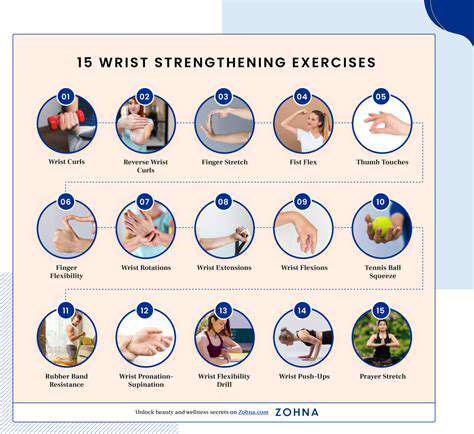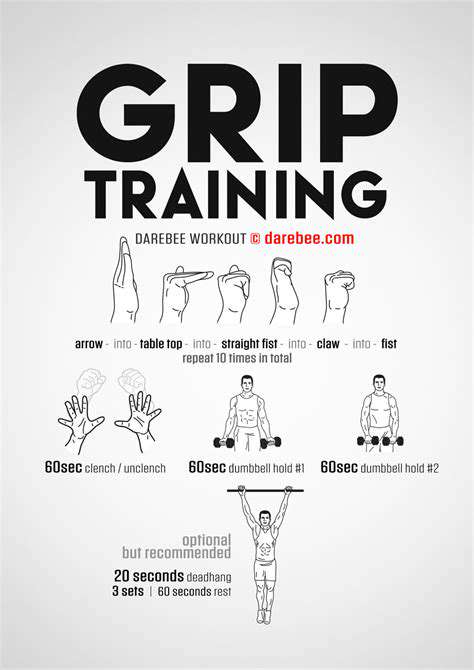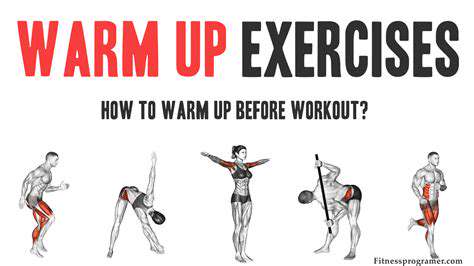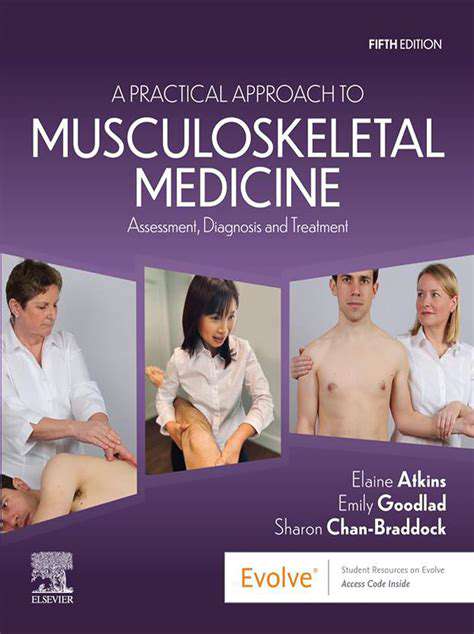How to Choose the Best Wrist Support for Your Needs
Understanding the Root Cause
Pinpointing the specific cause of wrist pain is crucial for effective treatment. Different types of wrist pain, from sharp, stabbing sensations to dull aches, can stem from various underlying issues. Proper diagnosis requires careful consideration of the location and nature of the pain, as well as any associated symptoms like swelling, numbness, or tingling. This initial assessment will guide you towards the most appropriate course of action.
Factors like repetitive movements, injuries, or underlying medical conditions can all play a role. A thorough understanding of these potential causes allows for a more targeted approach to relief and recovery.
Repetitive Strain Injuries (RSIs)
Repetitive strain injuries, commonly caused by overuse, are a frequent culprit behind wrist pain. Activities like typing, using a mouse, or playing musical instruments can strain the tendons and muscles surrounding the wrist joint, leading to inflammation and pain. Recognizing the pattern of your activities and identifying potential triggers is key to preventing further injury. Rest and appropriate ergonomic adjustments can be crucial components of managing this type of wrist pain.
Trauma and Injuries
Accidents, falls, or direct impacts to the wrist can cause immediate or delayed pain. Fractures, sprains, and dislocations are examples of traumatic injuries that can severely affect wrist function. Prompt medical attention is vital to accurately diagnose the injury and initiate proper treatment, which may include immobilization, physical therapy, or surgery in severe cases. Understanding the mechanism of injury can assist in determining the appropriate course of action.
Arthritis
Degenerative conditions like osteoarthritis and rheumatoid arthritis can manifest as wrist pain. These conditions involve inflammation and damage to the cartilage and surrounding tissues within the joint. Pain, stiffness, and swelling are common symptoms. Early diagnosis and management strategies are crucial for slowing the progression of the condition and maintaining wrist function. Medical interventions and lifestyle modifications may be necessary to effectively address this type of pain.
Nerve Entrapment
Nerves in the wrist, like the median nerve, can become compressed or trapped, leading to pain, numbness, and tingling. Carpal tunnel syndrome is a well-known example of nerve entrapment. Symptoms often worsen with activities like prolonged hand use or during the night. Proper diagnosis and treatment, potentially including splinting or surgery, are vital for alleviating pain and restoring function. Understanding the different nerve entrapment conditions can help you seek the appropriate medical advice.
Infections and Systemic Conditions
While less common, infections or systemic conditions can sometimes cause wrist pain. These conditions, often involving inflammation throughout the body, can affect the wrist as well. Systemic illnesses that affect joints, like lupus or gout, might also manifest as wrist pain. Seeking medical attention is essential in these cases to identify the underlying cause and receive appropriate treatment, potentially involving medication or other medical interventions.
Other Potential Causes
A variety of other conditions can contribute to wrist pain, including tendinitis, ganglion cysts, and wrist instability. Each condition presents with unique characteristics, and a comprehensive evaluation by a healthcare professional is crucial for accurate diagnosis and tailored treatment. Knowing the possible range of causes can help you focus your questions and concerns when consulting a doctor.
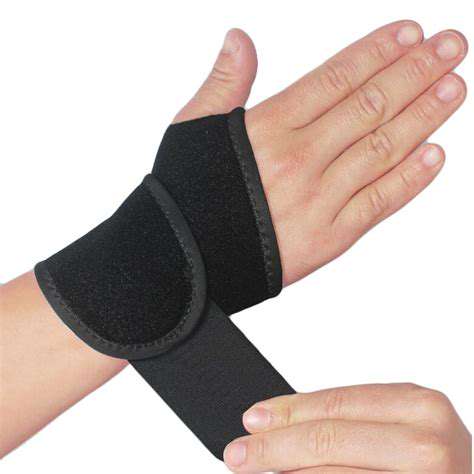
Key Features to Look for in a Wrist Brace: Beyond Just Comfort
Support and Stability
A crucial aspect of a wrist brace is its ability to provide adequate support and stability. This is particularly important for individuals with wrist injuries, arthritis, or repetitive strain injuries. A good wrist brace should offer a secure fit, preventing excessive movement and helping to alleviate pain. Look for braces with adjustable straps or Velcro closures to ensure a personalized fit. This customized fit will minimize the risk of the brace slipping or shifting during activities, which can be incredibly uncomfortable and potentially counterproductive to recovery or pain management.
Consider the materials used in the brace's construction. High-quality materials, such as reinforced nylon or breathable fabrics, will contribute to the overall support and durability of the brace. The material should also be comfortable enough to wear for extended periods, without causing skin irritation or discomfort.
Proper Wrist Alignment
A well-designed wrist brace should effectively maintain the natural alignment of your wrist. This is essential for preventing further injury and promoting proper healing. A brace that properly aligns the wrist can reduce stress on the surrounding muscles and tendons. Wrist pain is often a result of misalignment, and a properly fitted brace can help alleviate this issue. A brace that doesn't adequately align the wrist may actually worsen the problem over time.
Look for braces with features designed to hold the wrist in a neutral position. These features might include strategically placed padding or supportive components. A good brace will help to reduce strain and pressure on the joints, promoting faster recovery.
Comfort and Fit
While support and stability are paramount, comfort is equally important when selecting a wrist brace. A brace that is too tight or too loose can be incredibly uncomfortable, potentially leading to skin irritation or even further injury. Pay close attention to the materials used in the brace and how they feel against your skin. A comfortable brace will encourage consistent use, which is crucial for effective treatment or prevention.
A properly fitting brace should feel secure without being constricting. It should not put pressure on any nerves or blood vessels in the wrist. Adjustable straps or closures are often beneficial, allowing for a personalized fit and maximizing comfort levels. A well-fitting brace will allow for full range of motion without causing discomfort or hindering daily activities.
Durability and Material
A wrist brace should be durable enough to withstand daily wear and tear. Look for braces made from high-quality materials that can resist tearing or stretching. Consider the activities you'll be performing while wearing the brace; if you'll be engaging in strenuous activities, you'll need a brace that can handle the stress. A durable brace will provide long-term support and value for your investment.
The material used in the brace is also key. It should be breathable to prevent excessive sweating and discomfort. Consider the environment you'll be wearing the brace in; if you're working in a hot environment, a breathable material is essential. Avoid materials that may cause skin irritation or allergic reactions. A good wrist brace will be a reliable and long-lasting accessory in your daily life.




